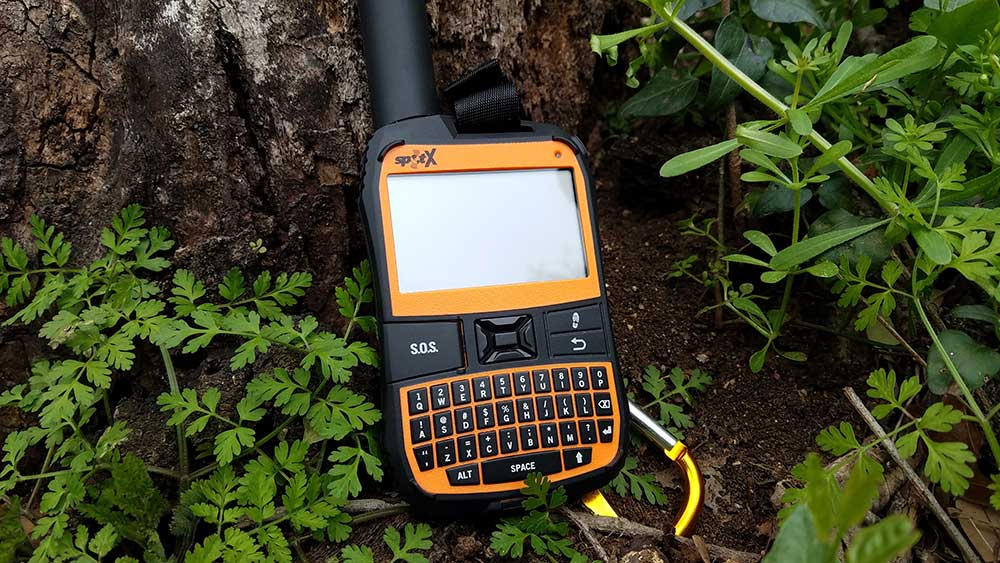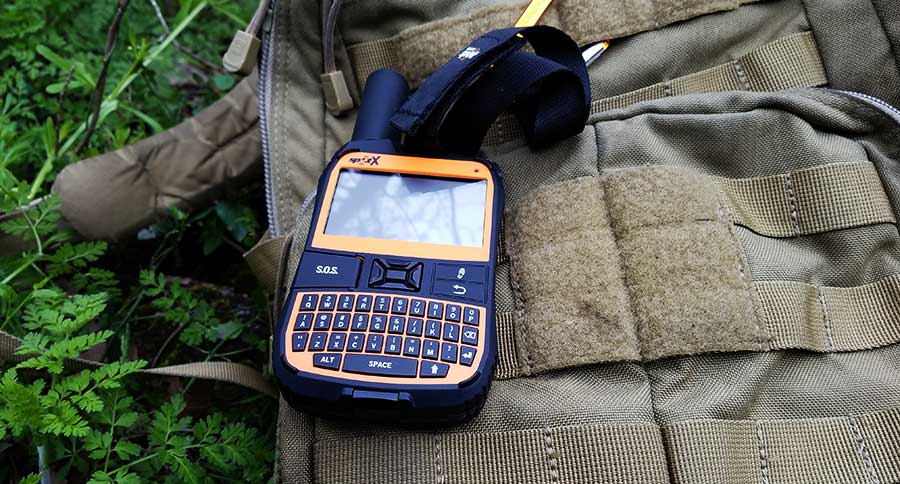Judging by this SPOT X review, I have little excuse not to take the two-way satellite messenger into the backcountry every time.
Heading into the backcountry at this point in my life is a far cry from years ago.
I don't get to do a ton of it these days, what with a wife and two young boys at home, but when I do step away from my laptop, cell service, and the need to run a 24/7 outdoor website, there are new things I've got to worry about.
When I was younger, I wasn't nearly as concerned with "checking in," and my family generally trusted I'd be back in one piece. Now with a family, and a consistent need for verification that I'm alive and returning when expected, the idea of a two-way satellite messaging device became more requirement than luxury.
When given the opportunity to check out a new SPOT X, I wasn't about to pass it up. At first glance, it took care of every issue I'd run into in the past: it sent text messages are sent via a two-way satellite to check in, it came from a real cell phone number that my wife could reply to, and the battery life was slightly above expectations.
And the bottom line was, I had a legitimate, direct S.O.S. tool should anything go seriously awry.
I put it to the test, and maintained that enthusiasm the whole time I spent with the SPOT X.
The nuts and bolts
Basically, the SPOT X messaging device uses a simple-to-set service plan to serve as a cell phone's text mechanism. You can preset messages, which I thought was a smart way to save some battery life out in the field, and it also reads your location with distinguishable tracking intervals, and can be set up to send messages when you reach certain programmable waypoints.
I brought the SPOT X to Wyoming for an off-the-grid pronghorn hunt, and knew it'd be a great place to get a feel for its capabilities.
I loaded the wife's number (plus my dad, for the "Antelope down!" text I was anticipating and would be obligatory if I pulled it off). Then I preset some messages, and charged the battery.

Once in camp, I started by verifying my phone was as useless as I'd expected. Box checked. The closest town was Kaycee, Wyoming, and I'll just go ahead and assume it wasn't set up with many cellular towers.
Despite the desolation, the SPOT X sent my texts swiftly, and I could set the retrieval intervals to different increments, depending on when I expected a response. I turned it on frequently right after a text, and was able to read the responses right away. I switched it to long intervals after checking in, to save on the battery.
Speaking of which, the battery life is going to vary greatly depending on how often you're tracking or retrieving, and I didn't really get to push it to the maximum during a five-day trip. I don't think the 10-day while tracking at 10-minute intervals estimate from SPOT X's website is too far off. It's rechargeable lithium, and I've had great luck with that style in other devices.
And though I wasn't going to "test" the emergency response or search and rescue services, I was able to rest assured that I could at least explain and communicate the nature of the situation should something have occurred.
Minor glitch
After giving me great initial impressions, the SPOT X made its way to my colleague Chris, who was going on a backcountry Colorado camping and fishing trip. It was yet another great excuse to use it, so I happily handed it over.
He found it useful too, had many of the same positive things to say as I did, but also experienced a little troubling incident. The whole thing crashed on him while trying to type a message, and as far as backcountry communication devices go, that's an instant flag.
He was able to quickly reboot and continue using it, but it did give both of us a little pause. Many times a reluctant tech user will point to that sort of issue as the main reason they stay away. Both Chris and I still agreed we'd rather have the SPOT X than anything else we've used, and we wrote it off as something that could likely be fixed with a software update.
That's another thing worth pointing out: the SPOT X can be plugged directly into a computer and manipulated that way, so it's not all typing away on the Qwerty keyboard.
As a new device (to me) and a first step into the satellite communication game, I feel like the SPOT X delivered the way it should. The user interface took a bit of getting used to, but so does any device these days.
My wife did say it gave her a lot more peace of mind while I was away, and that counts for a lot in my book.
I also believe the SPOT X device would make a good choice for someone looking for the same things I needed, and they'll be pleasantly surprised at the extras it can pull off.
The SPOT X will run you $250, plus a service plan that starts at $20 a month with no annual commitment and a month-to-month flex plan.
It flat out makes sense, and despite the hiccup, I'm still recommending the SPOT X as a smart and responsible way to stay in contact and within reach of safety, no matter how far into the wild we're drawn to go.
NEXT: DID YOU KNOW YOU CAN BREAK INTO MOST GUN SAFES FOR LESS THAN $10?
WATCH: TELLING THE HUNTING STORY MIGHT JUST SAVE IT





